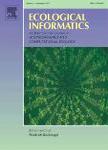版权所有:内蒙古大学图书馆 技术提供:维普资讯• 智图
内蒙古自治区呼和浩特市赛罕区大学西街235号 邮编: 010021

作者机构:Shandong Univ Technol Sch Mech Engn Zibo 255000 Peoples R China
出 版 物:《ECOLOGICAL INFORMATICS》 (Ecol. Informatics)
年 卷 期:2025年第86卷
核心收录:
学科分类:0710[理学-生物学] 07[理学] 09[农学] 0713[理学-生态学]
基 金:National Natural Science Foundation of China
主 题:Recycling of waste plastic bottles Machine vision Deep learning Target recognition Classification detection Three-dimensional positioning
摘 要:As a vital component of ecologically sustainable development, the effective recovery and reuse of waste plastic bottles is essential for environmental protection and resource recycling. Given the varying recycling values of plastic bottles based on their colors, precise sorting and recycling are particularly important. Traditional manual sorting methods face challenges such as low efficiency and high costs. In contrast, machine vision-based image recognition technology offers a more efficient solution for classifying and recovering waste plastic bottles, with classification recognition and target positioning being critical technologies for the optimal use of ecological resources. This study introduces a deep learning approach for identifying and locating waste plastic bottles, utilizing the reversible column network (RevCol) as the backbone to prevent information loss. A lightweight combined decoupling head is designed to minimize computational load while enhancing accuracy. The Weighted Intersection over Union version 3 (WIoU v3) loss function is incorporated to improve detection performance. By leveraging depth information from an infrared camera alongside RGB image mapping, the method achieves recognition and three-dimensional positioning. Experimental results indicate that the proposed model outperforms traditional models, with a 36.39 % reduction in parameters and a 50.62 % decrease in computational requirements, while accuracy and recall rates improve by 4.56 % and 12.14 %, respectively. Additionally, mAP50 and mAP50-95 values increase by 5.86 % and 3.89 %, and the recognition speed reaches 62 FPS, a 51.22 % improvement, meeting real-time detection needs. Experiments conducted on a deep learning-UR5 robot platform demonstrate high recognition accuracy and sorting success rates in actual waste plastic bottle sorting scenarios. The promotion and implementation of this method will significantly enhance the recycling of waste plastic resources and contribute to th